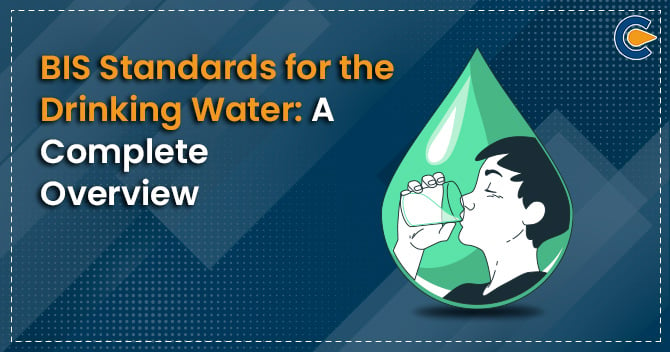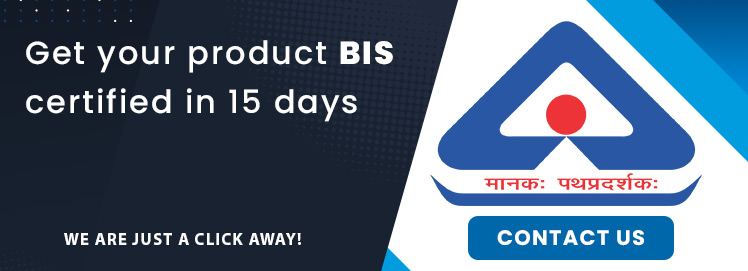Getting access to safe and hygienic water is a birthright of every citizen. Sadly, the ever-increasing pollution has snatched that right from the citizen. As per a recent report by NGO, 2/3rd of Indian households consume untreated and unsafe water. Only 8 per cent of the Indian homes boil prior to water consumption, which is an inefficient way of discharging contaminants. In the purview of the above, the Bureau of Indian Standard i.e. BIS, has formulated dedicated guidelines that cater to this unprecedented problem under IS 10500:2012. This write discusses the BIS Standards for the Drinking Water in an elaborative way.
Government’s Stance to resolve Unsafe Water issues
- The Bureau of Indian Standards (BIS) has underpinned specific standards to ensure the availability of safe drinking water for Indian citizens.
- The said standards provided for the systematic and periodic testing of potential water sources to ensure their alignment with underlying norms.
- In 2005, the Ministry of Water Resources[1] came up with comprehensive guidelines known as Uniform Protocol for Water Quality Monitoring that cater to water hygiene issues.
What are the BIS standards for the Drinking Water in India?
As per the Central Groundwater Board, the Uniform Drinking Water Quality Monitoring Protocol encloses BIS’s formulated specifications for drinking water quality.
This standard provides for limits/thresholds under two major heads, namely acceptable and permissible limits, in case of unavailability of an alternate source. Any water sample would stand unfit for human consumption if they found to be in non-conformity with these limits.
Also, water sample that does not comply with the permissible bacterial or chemical contamination limit shall declare unfit for consumption.
BIS 10500-2012 specifies the following acceptable limit of bacteria and other contamination. This serves as fundamental BIS standards for the Drinking Water in India.
| Test parameter | Acceptable limit | Permissible limit (In the absence of alternate source of water) |
| pH value | 6.5-8.5 | No relaxation |
| Turbidity | 1 | 5 |
| Total hardness as Calcium Carbonate,, mg/l, Max | 200 | 600 |
| E.coli presence/absence | Shall not present in 100ml sample | Shall not present in 100ml sample |
| Total iron as Fe, mg/l, Max | 0.3 | No relaxation |
| Taste | Agreeable | Agreeable |
| Odour | Agreeable | Agreeable |
Standards of Water for Human Consumption
- Drinking water for human consumption should not comprise excessive minerals level.
- BIS 10500:2012 is the standalone directive that enacts the drinking water standards in India. The said is amended accordingly in view of various facts, including groundwater exploitation. The directive has underpinned allowable and minimal limits relating to hardness, TDS, Chlorides, etc.
- As per BIS, Any water sample containing a TDS level above 500 mg/l can trigger digestion issues. Thus, such a sample should confirm the allowable contamination limit.
- BIS provides for zero residual dissolved solids in drinking water.
| Serial Number | Trait | Requirement | Allowable threshold in the absence of an alternative source |
| Color-hazen units, max. | 5 | 25 | |
| odor | Unobjectionable | Unobjectionable | |
| Taste | Agreeable | Agreeable | |
| Turbidity | 5 | 10 | |
| Total Hardness as Calcium Carbonate,max mg/l | 300 | 600 | |
| Iron. Max mg/l | 0.3 | 1.0 | |
| Chlorides, Max mg/l | 250 | 1000 | |
| Residual free Chlorine | 0.2 | — |
Required Traits
| Calcium as Ca, mg/l,max | 75 | 200 | |
| Dissolved Solids, mg/l, max | 500 | 2000 | |
| Manganese, mg/l,max | 0.10 | 0.3 | |
| Copper as Cu, mg/l,max | 0.05 | 1.5 | |
| Nitrate,mg/l,max | 45 | 100 | |
| Sulphate,mg/l,max | 200 | 400 | |
| Fluoride, mg/l,max | 1.5 | 1.9 | |
| Nitrate mg/l,max | 45 | 100 | |
| Phenolic compounds, mg/lit, max | 0.001 | 0.002 | |
| Cadmium, mg/lit , max | 0.01 | No relaxation | |
| Mercury, mg/lit max | .01 | No relaxation | |
| Arsenic, mg/lit, max | .01 | No relaxation | |
| Selenium, mg/lit, max | .01 | No relaxation | |
| Cyanide, mg/lit, max | 0.05 | No relaxation | |
| Zinc mg/lit, max | 5.0 | No relaxation | |
| Lead, mg/lit, max | 0.05 | No relaxation | |
| Chromium as Cr, mg/lit, max | 0.05 | No relaxation | |
| Anionic detergents, mg/lit, max | 0.2 | 1.0 | |
| Polynuclear Hydro carbons | — | — | |
| Pesticides, mg/lit, max | Absent | ||
| Aluminum mg/lit, max | 0.03 | 0.2 | |
| Alkalinity, mg/lit ,max | 200 | 600 | |
| Boron, mg/lit, max | 1.0 | 5.0 |
BIS Standards for the Drinking Water (Bacteriological limits)
- Desired coliform count in water entering the distribution system: It should be zero for a given 100 ml sample.
For water present in a distribution system:
- E Coli count in 100 ml of any sample = Zero
- Coliform organisms per 100 ml in any sample = 10
- Coliform organisms should be zero in 100 ml of any two repeated samples. The same shall apply to 5 per cent of the water samples collected for the year.
Conclusion
The surging quantum of unsafe drinking water is a pressing issue for the Indian government. The unprecedented groundwater exploitation is among the key reasons behind this severe problem. The government of India has launched initiatives in the past to fix the potential pitfalls and ensure the availability of safe water. But it seems that the rate at which this problem is thriving needs a concrete solution. BIS standards for the Drinking Water play a key role in this context as they ensure the availability of safe water for the masses.













